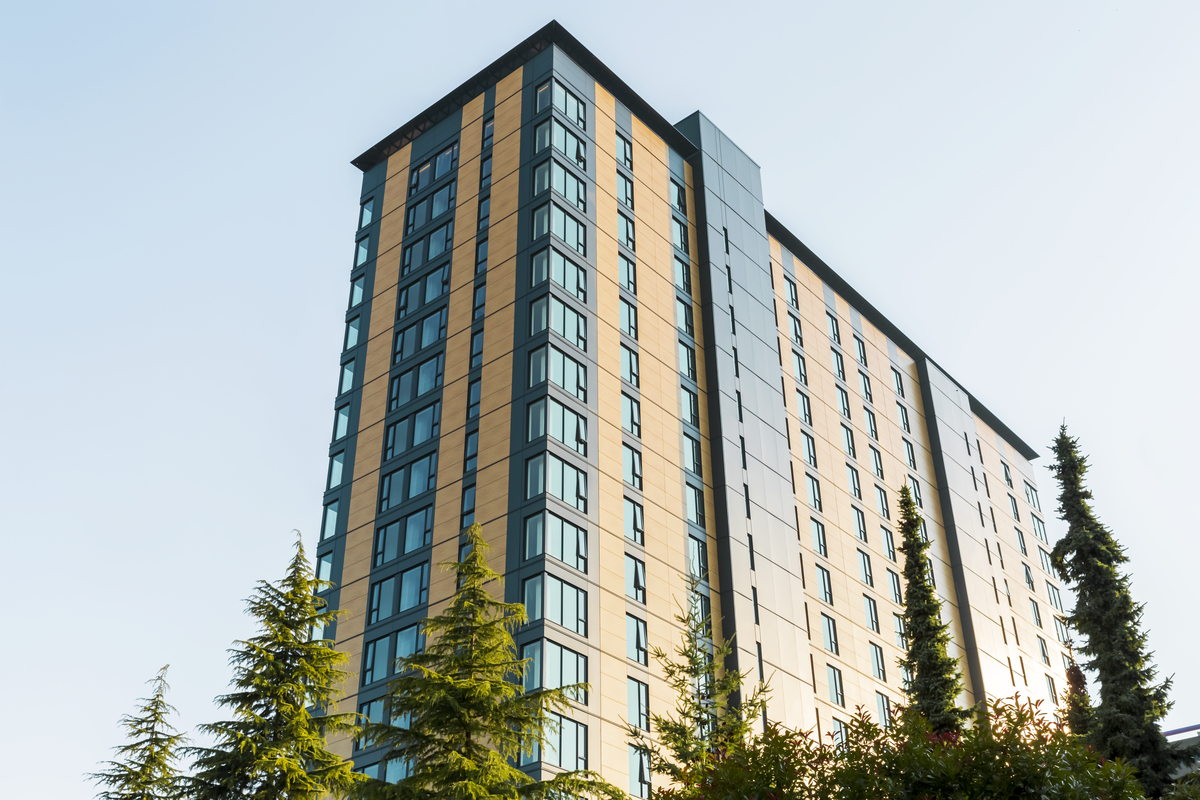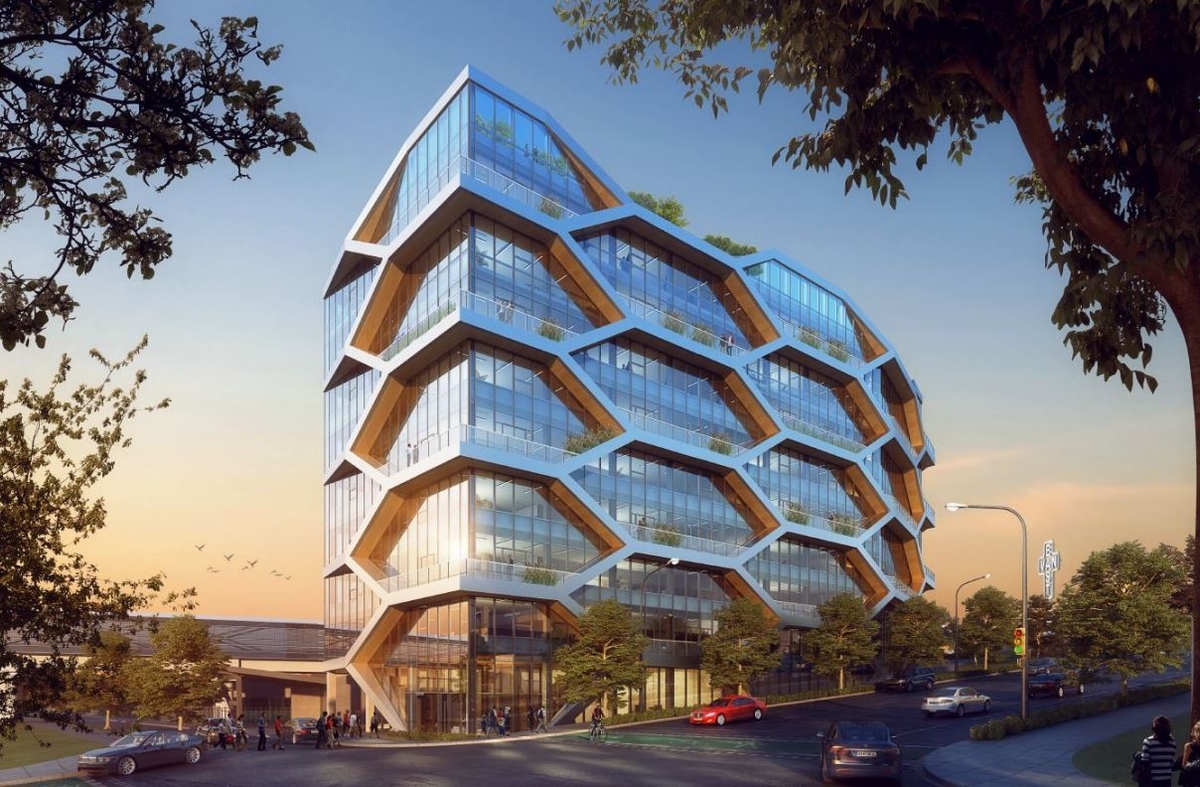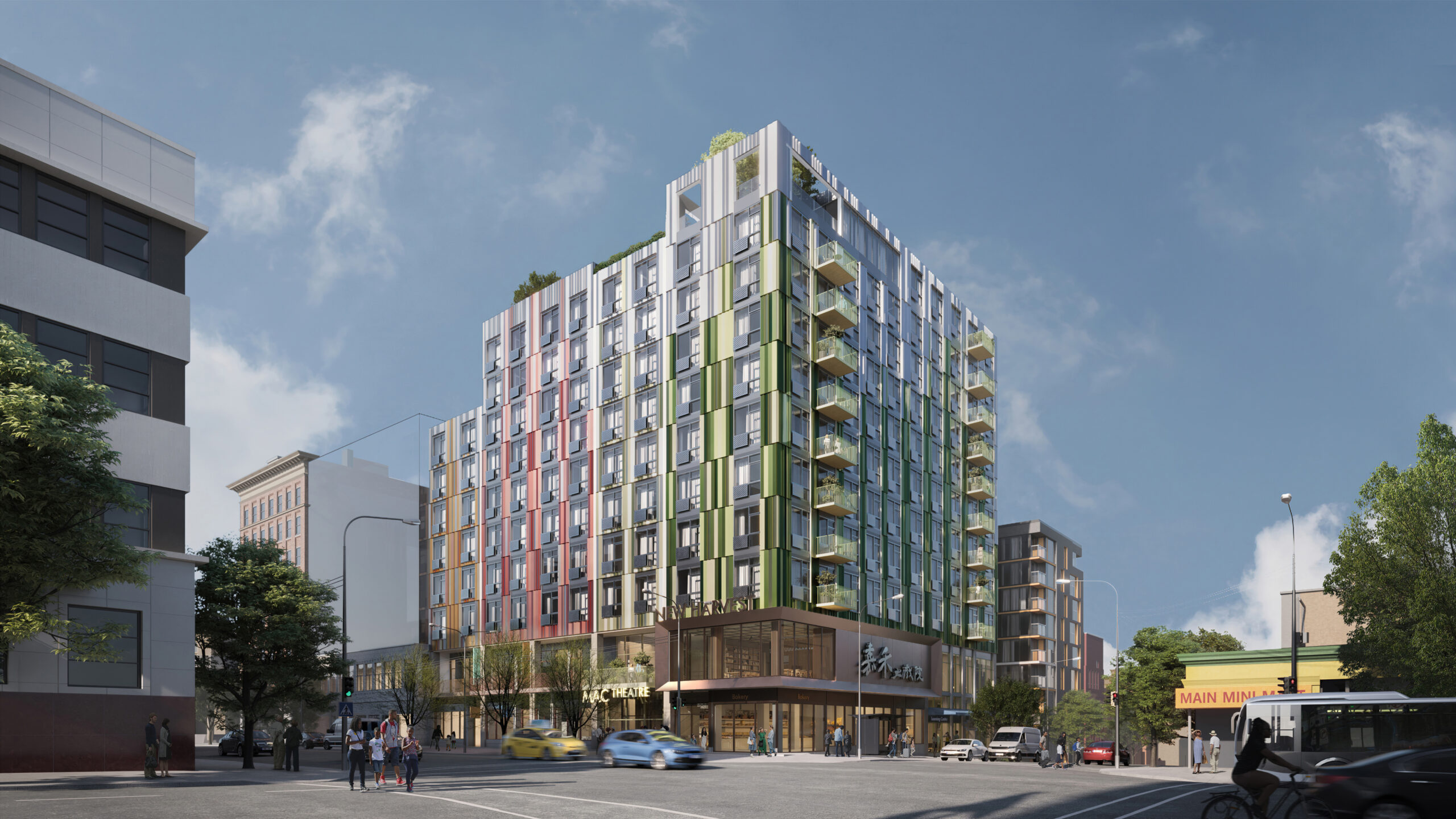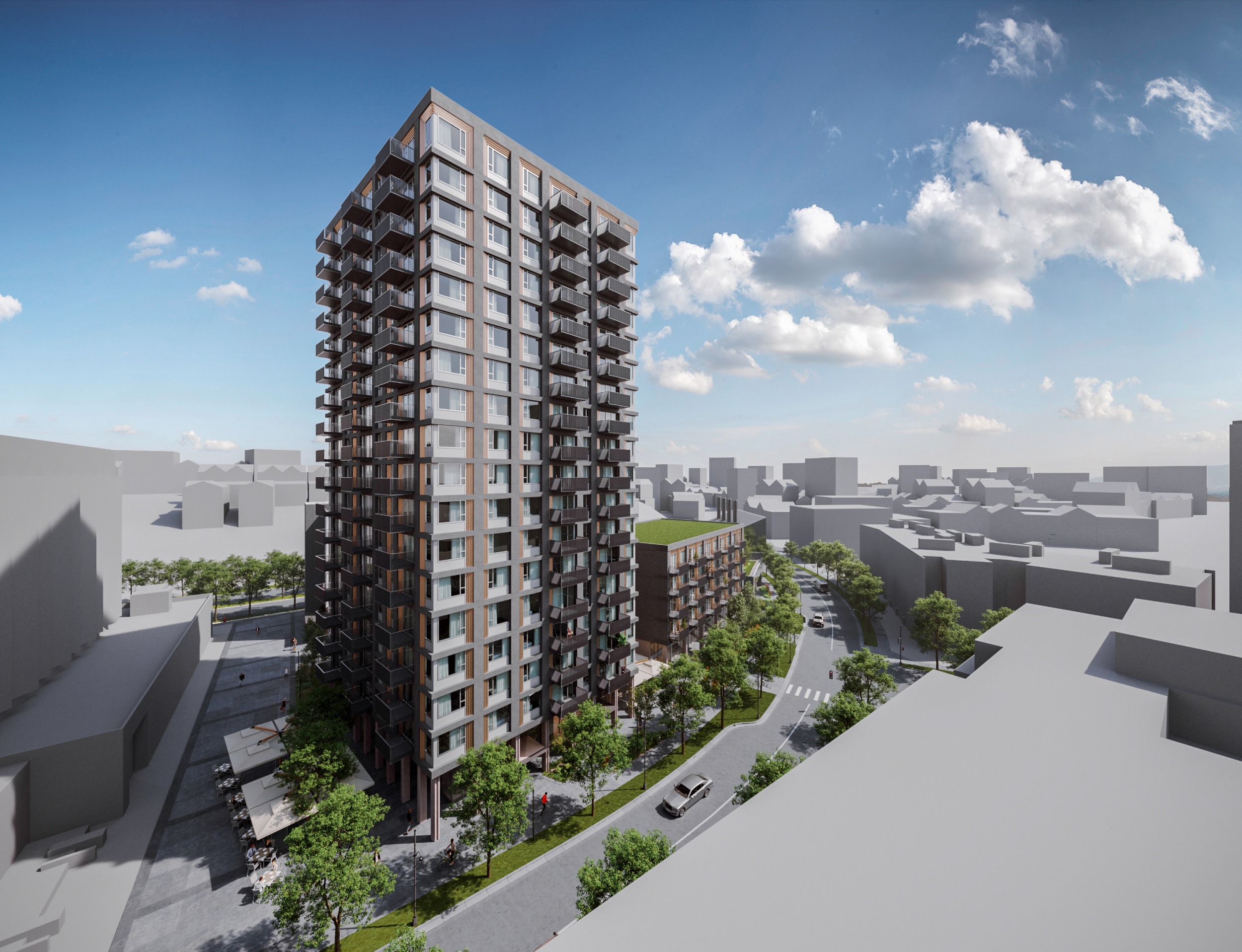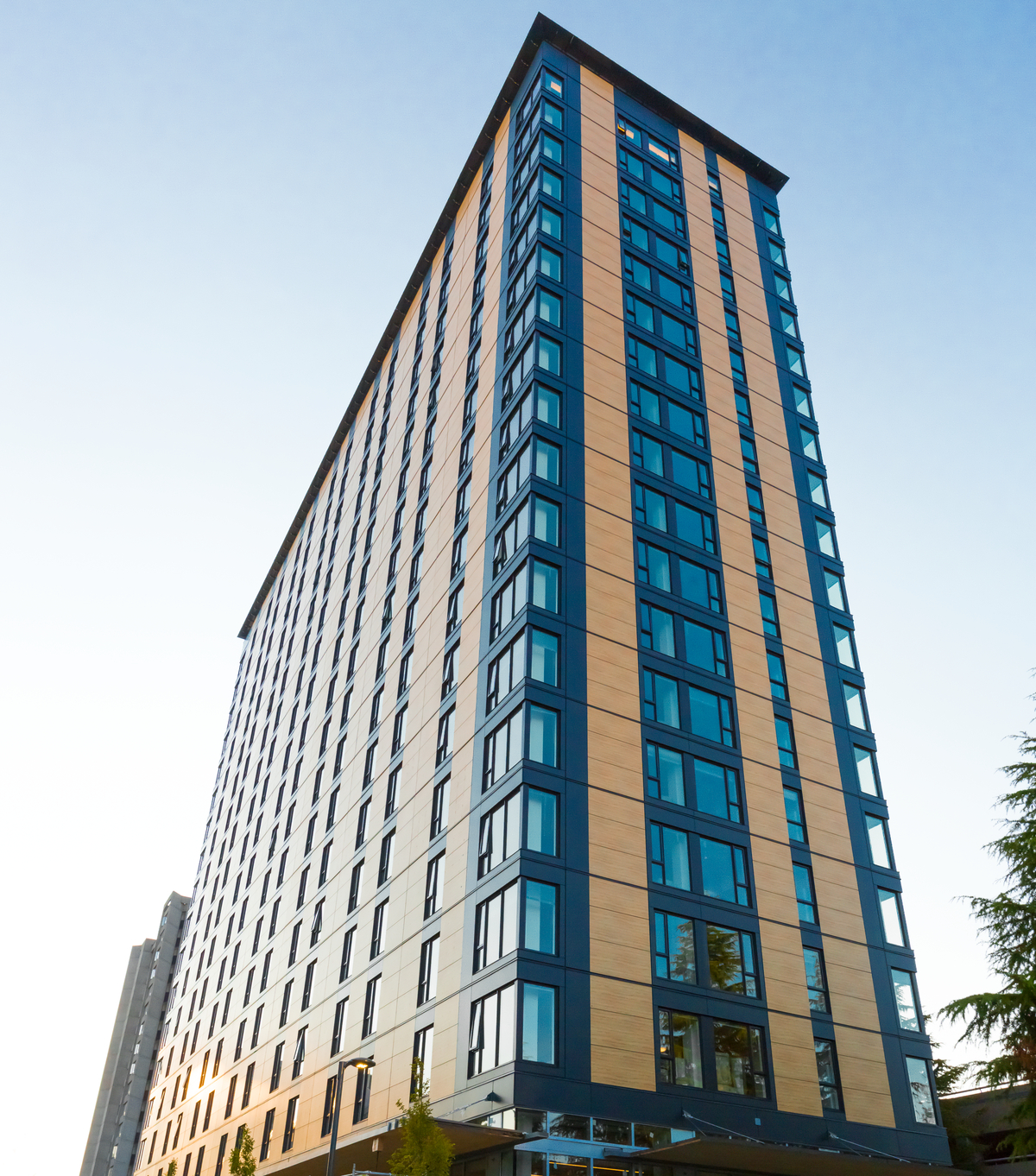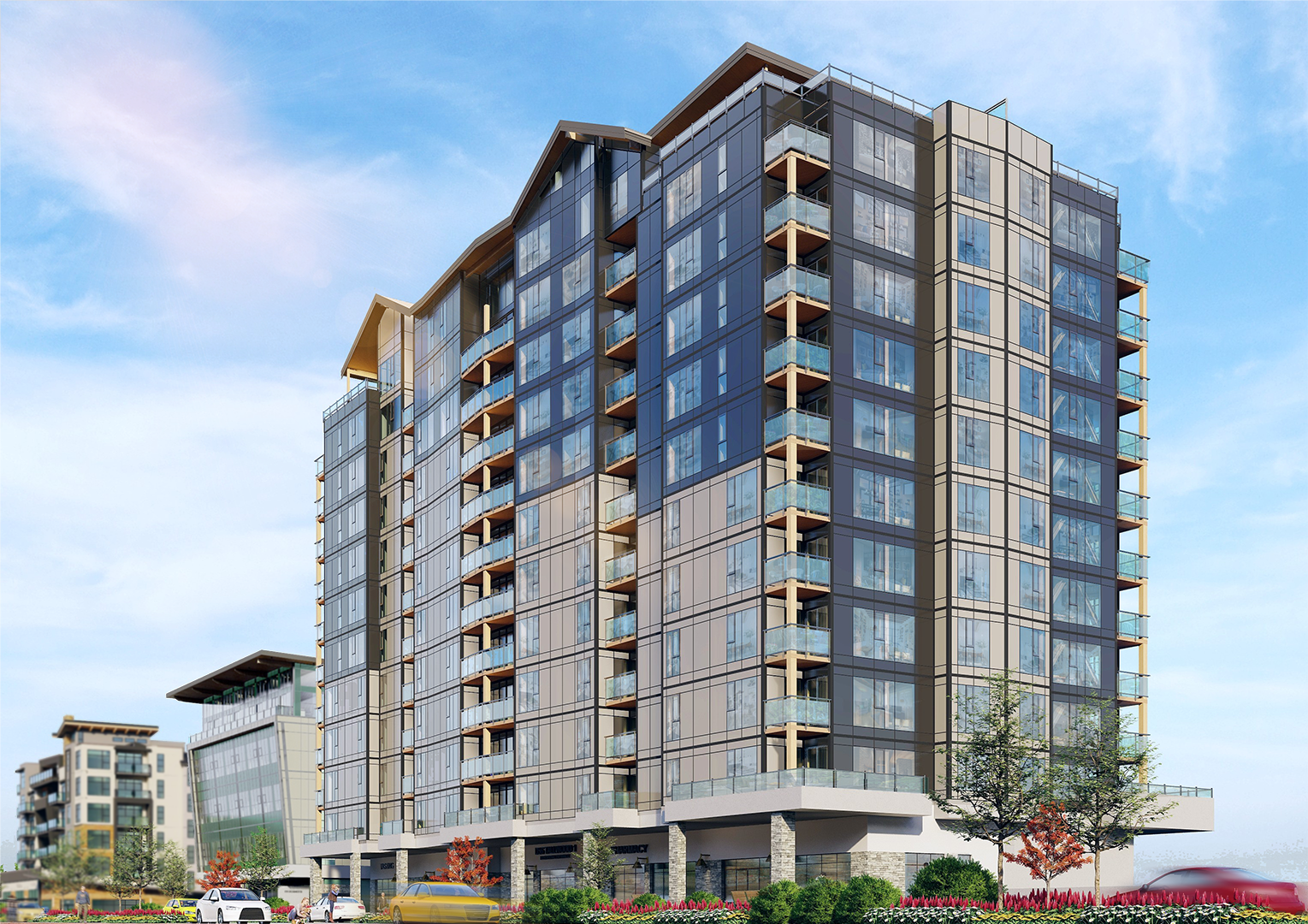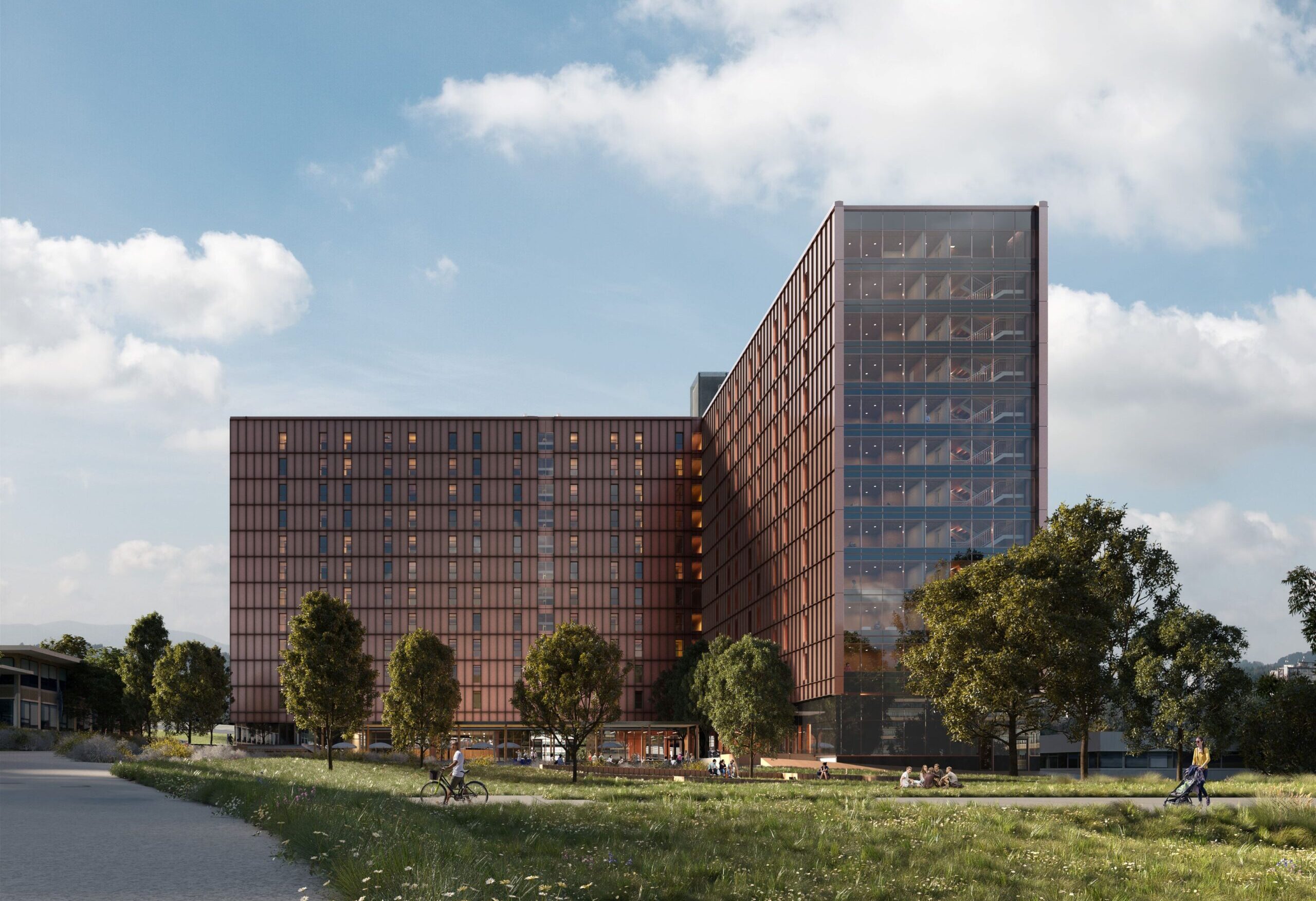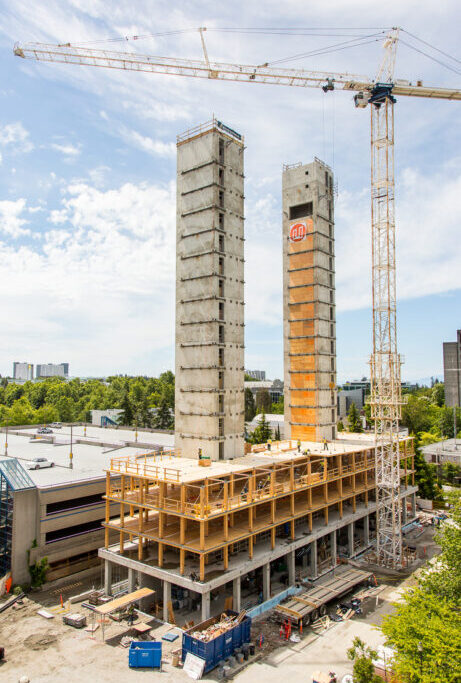The evolution of getting taller
While tall wood buildings can be found all over the world, British Columbia has been a leader in advancing this type of construction. In 2009, BC became the first Canadian jurisdiction allowing residential wood structures of up to six storeys.
In 2014, the Wood Innovation and Design Centre was built in Prince George using local mass timber products. At eight levels (six storeys with a mezzanine plus a penthouse), the milestone project became one of the tallest wood buildings in North America.
That honour was eclipsed in 2017 with the completion of Brock Commons Tallwood House, an 18-storey student residence at the University of British Columbia. This project received international media coverage and recognition for expanding the possibilities of using mass timber in this type of construction. Brock Commons inspired architects, developers, and other building professionals to learn about tall wood design, showing people all around the world what is possible with wood.
Today, B.C. continues to lead, encouraging advancements in technology and design worldwide. A recent example is Tallwood 1 at District 56 in Langford, B.C.—a 12-storey, mass timber multifamily building taking advantage of the two-way spanning capability of CLT. The City of Vancouver have released policies and incentives aimed to promote the construction of high-rise mass timber buildings and transition to more sustainable construction methods.
